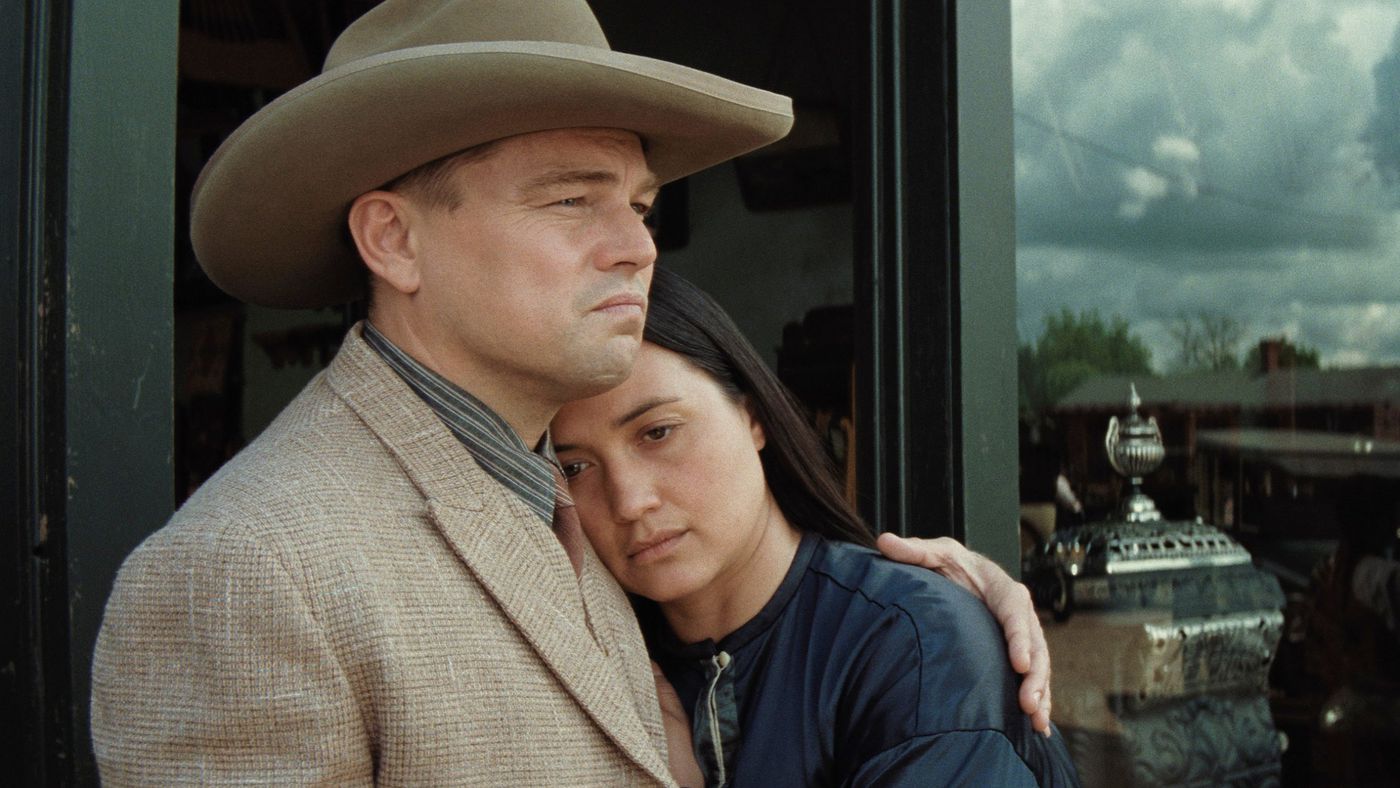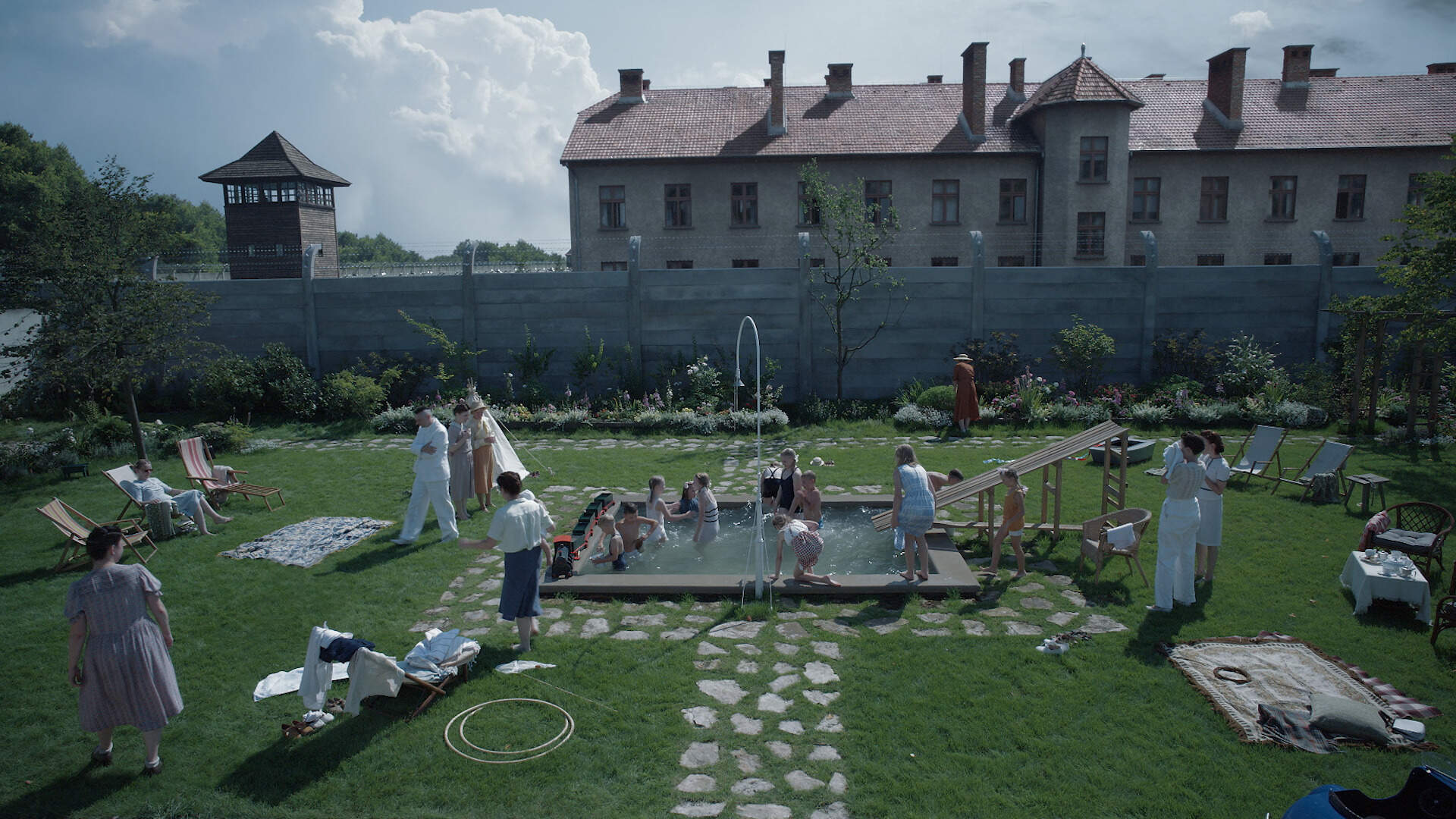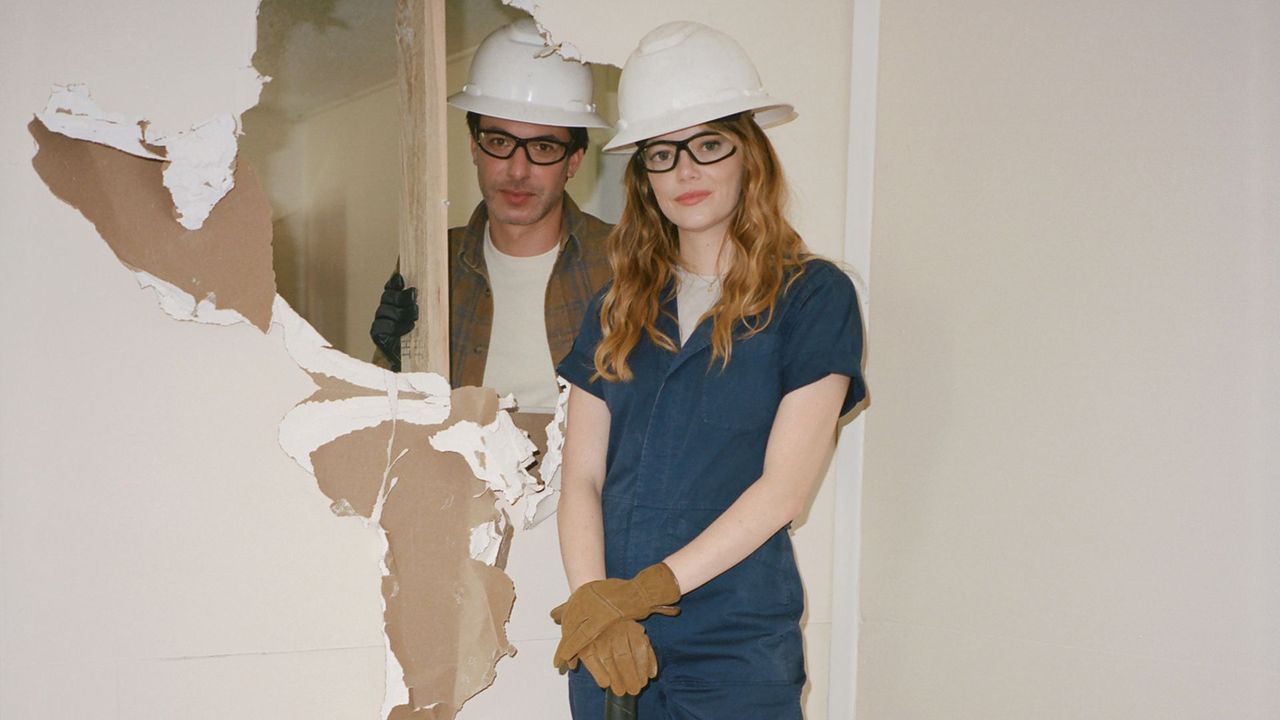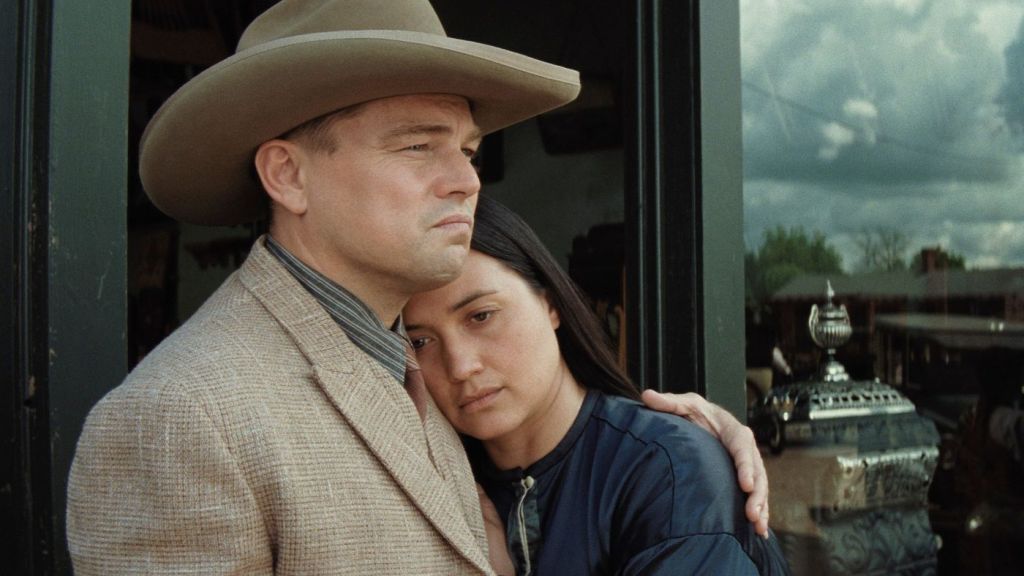“Look outside and you will see yourself. Look inside and you will find yourself” – Drew Gerald
I don’t know who that is, but I was looking for quotes about self-knowledge on Google and this one resonated the most and was the perfect intro to this piece. As citizens of the western world, we are going through a time of revolution, maybe not physically but internally. We can’t all be ambitious and strive for power because power leads to wickedness, right? We crave stability, comfort and love, earning those things and staying focused on them. But what does that cost in terms of what we are in proximity with and who we are?
Martin Scorsese, Jonathan Glazer, Nathan Fielder and Benny Safdie have all attempted to answer their own feelings about this in the films/television shows they have released in 2023. As white men ranging from middle to old age, they reflect on history and the current world directly and indirectly through their protagonists. From greedy criminals to the family of a Nazi officer and the couple behind a HGTV reality show, not only do they show hostility in their actions from a detached and introspective place. They also connect the audience to people who are in the wrong, shamefully seeing the existing similarities between us and them.

In Scorsese’s latest film, Killers of the Flower Moon, we are taken to 1920s Oklahoma where the Osage Nation resides. Upon their discovery of oil on the land, they become “the chosen people of chance,” giving us as an audience an entirely different perspective on Native Americans than we’ve ever seen in cinema. We see them decorated in jewels, being chauffeured around by white people and fully assimilating into American culture on their own terms due to the leverage given to them by wealth. All of this serves as a backdrop to introduce our protagonist, Ernest Burkhart (Leonardo DiCaprio) who is so transparently guided by greed and violence from the first few seconds of his appearance. Guided by his conniving uncle Bill “King” Hale who sees himself as a “friend” of the Osage, Ernest dives deeper into their world. Due to his relationship with an Osage woman, Mollie Kyle (Lily Gladstone), he has one foot in and one foot out as he plots with King to murder her family members and various other affiliates of the tribe to inherit their wealth.
Most of this story is seen through Ernest’s eyes instead of those of the victims themselves; although moments of violence and brutality are seen, the true disgust comes with how casually murder is discussed in proximity to this community they love. Bill sits in on meetings as the Osage mourn their dead and seek justice, Ernest comes home and comforts his wife and children after blowing up the home of her sister. One could see these men as manipulators, but Ernest experiences a conflict between his love for the family and his own greed, making his actions look like an act of self-immolation— understanding his own evil but without the strength to stop. In contrast, Bill equally balances his love and his own greed, almost like they are the same.
Not just indicting white Americans’ complicity in these crimes, Scorsese takes us on as an audience and himself as a filmmaker in the final act as the narrative we just saw unfold for the past three hours is turned into a radio show. With all the harm done to these real people who still didn’t receive justice in their story, it becomes a form of entertainment for us who are far away from it, reduced to narrative. Maybe we aren’t as directly violent as Ernest or Bill, but we all have a part to play as worldly citizens to be not just kind but active and aware of the injustices happening around us. As Bill gloatingly says as Ernest plots to testify against him, bringing himself and everyone else to justice: “It’s just gonna be another common day tragedy.”

An odd 15 to 20 years later, the world was faced with perhaps its most infamous genocide— the Holocaust. The subject is not alien to cinema, from wartime comedies like Inglourious Basterds, action films like Defiance and classic heart-wringing dramas Schindler’s List, The Pianist, and The Boy In The Striped Pyjamas. Despite some differing genres, they all have a closeness to the victim’s experience and use that to build to either thrilling, violent catharsis or moments of emotional poignancy with the assumption that we’ve moved on and grown past this behaviour in the world. Based on a book, Jonathan Glazer’s The Zone of Interest uses that knowledge of past cinema and our perception of the Holocaust to centre a film around a family who lives right outside of Auschwitz. The real Hoss family’s patriarch Rudolf was the longest serving commandant of Auschwitz concentration camp, Pioneering efficiency in genocide to the point where he had an operation named after him, charged and hung for his war crimes in 1947 when the war ended. Even though the film shows some of these events, it takes a rather European slice of life approach to narrative, as human drama takes shape in the foreground and genocide takes place in the background.
The chug of trains coming to Auschwitz can be heard and seen as children play in the garden, shots and screams as Rudolf’s (Christian Friedel) wife Hedwig (Sandra Hüller) tries on a new mink. It not only uses emotionally distant and documentarian visuals paired with dry, sobering sounds to create its point, but the characters themselves seem casually disgusting. Hedwig and her friends gossip about the nice clothes they receive from the Jewish people sent to camp and laugh about a dress not fitting, the children become increasingly violent and ambivalent as fascism seems to be the norm in their household. The film does follow Rudolf’s ascent through the Nazi ranks framed as casually as the typical working man. Still, it’s Hedwig’s actions that shock.
Dubbed “the Queen of Auschwitz,” she enacts her power in the home by taking out her anger on her household help or lashing out at Rudolf as the possibility of losing their home appears. They are both addicted to power in different ways, and through showing their actions as mundane and simple, they become a shocking parallel to modern western life which values comfort over morals; we nurture those in our immediate life while working at places that profit off the suffering of the less fortunate. Our mind attempts to separate these things, but one could argue they rarely are far apart.

Moving to the present day, The Curse, created by Nathan Fielder and Benny Safdie combines their styles of candid reality and intense, fly-on-the-wall fiction to create a season of television that is so casually uncomfortable, whether it’s in shock or laughter. Our two protagonists are Asher (Nathan Fielder) and Whitney Siegel (Emma Stone), a newly married couple trying to get their environmentally-friendly New Mexico house-flipping show off the ground along with a morally wayward producer, Dougie Schecter (Benny Safdie). During the chaos of making the show, Asher interacts with a little girl who “curses” him, leading to Asher having premonitions about the show and his marriage throughout the 10 episodes.
Asher and Whitney present themselves as quite the standard modern, heterosexual millennial couple; Asher is mild-mannered and maybe a bit too respectful and concerned about his morals to fully operate in most situations while Whitney is a charismatic chameleon, knowing how to use her well-meaning whiteness to her advantage in any situation. She does not come in a business suit or an overtly brooding look but instead sports slim-fitting jeans, Birkenstock sandals and a tote bag like your typical metropolitan ‘yummy mummy,’ seeming to be the dominant party in this relationship. The candid cinematic style of the show is really what makes these protagonists work. Most of the shots look like they’re recorded behind bushes, in different buildings— truly observant of behaviour that we feel isn’t supposed to be seen in public.
From conversations about deflated manhood and cherry tomatoes to the lens of kind white liberalism being unscrewed and revealed as earth-shakingly evil, we see the conflict in our characters but also how they change their motivations depending on who they’re talking to. Asher tries to be as morally just as he can while creating his perfect home, family and relationship, while his wife Whitney will do anything to create the perception of perfection in her home, community and relationship for the sake of the show and fear of being seen for who she truly is. The kinship gained towards these characters from this view isn’t so directly relatable to our lives but more documentarian, an increasingly bizarre world filled with people that exist in our everyday lives. They might not all be reality stars in our world; still, they’re in our cities, paying for overpriced rent with their family’s ethical landlord money, slowly gentrifying low-income areas with a toothy smile and iced coffee in hand.
Some may ask ” why”? Why centre such horrible people who don’t deserve humanity, sympathy or even our time? As storytelling naturally evolves and we become more aware of what’s happening in the world beyond our immediate bubbles, it becomes hard to conceptualise that reality for ourselves, better yet to create stories from that perspective. Sadly, our realities are closer to that of the Höss family, the Siegels, and Ernest Burkhart; there’s a story there that deals with our relationship with violence, whether directly or indirectly. The air of relatability isn’t just reserved for positive tales of youth or representation, but also to create cautionary tales of the biggest societal ills that face us today. Not only does it add an interesting layer of narrative to a story, but it wades into deep and necessary discomfort within an entertainment industry which seems focused more than ever on comfort. I don’t personally believe art can completely change the world, but it can give us the chance to reflect eventually leading to some sort of individual change— a thought worth both preserving and protecting.


Leave a comment